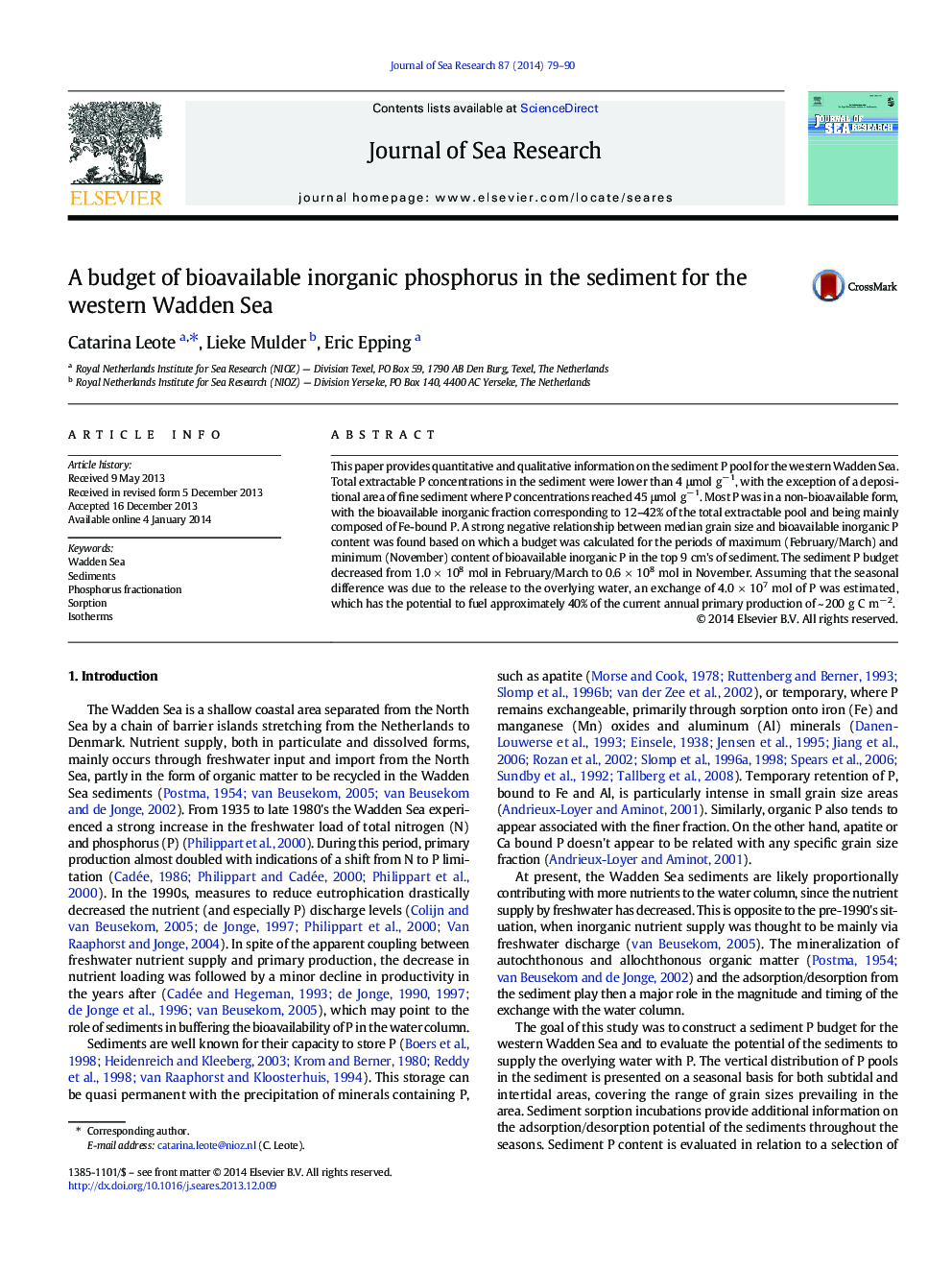| Article ID | Journal | Published Year | Pages | File Type |
|---|---|---|---|---|
| 4549827 | Journal of Sea Research | 2014 | 12 Pages |
•Sediment P content was low with the exception of a fine grained sediment area.•Most sediment P was in a non-bioavailable form, bound to Ca.•P content showed a strong negative relationship with median grain size.•Sediment P concentrations were higher in winter and lower in autumn.•P release from the sediment may fuel more than 40% of present primary production.
This paper provides quantitative and qualitative information on the sediment P pool for the western Wadden Sea. Total extractable P concentrations in the sediment were lower than 4 μmol g− 1, with the exception of a depositional area of fine sediment where P concentrations reached 45 μmol g− 1. Most P was in a non-bioavailable form, with the bioavailable inorganic fraction corresponding to 12–42% of the total extractable pool and being mainly composed of Fe-bound P. A strong negative relationship between median grain size and bioavailable inorganic P content was found based on which a budget was calculated for the periods of maximum (February/March) and minimum (November) content of bioavailable inorganic P in the top 9 cm's of sediment. The sediment P budget decreased from 1.0 × 108 mol in February/March to 0.6 × 108 mol in November. Assuming that the seasonal difference was due to the release to the overlying water, an exchange of 4.0 × 107 mol of P was estimated, which has the potential to fuel approximately 40% of the current annual primary production of ~ 200 g C m− 2.
